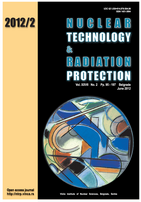
MINERAL CHARACTERIZATION OF SOIL TYPE RANKER FORMED ON SERPENTINES OCCURRING IN SOUTHERN BELGRADE ENVIRONS BUBANJ POTOK
Pages: 131-136
Authors: Božidar Dj. Cekić, Valentin N. Ivanovski, Aleksandar Djordjević, Velimir Aleksić, Zorica Tomić, Stefan Bogdanović, Ana B. Umićević
Abstract
The paper addresses the issue of health risk associated with the presence of chrysotile in the soil type ranker formed on massive serpentines occurring in the area of Bubanj Potok, a settlement located in the southern Belgrade environs, Serbia. Characterization of the ranker soil was conducted by scanning electron microscopy, X-ray diffraction, micro-Raman spectroscopy and transmission 57Fe Mössbauer spectroscopy. Scanning electron microscopy figures showed regular shaped smectite (montmorillonite) particles, aggregates of chlorite, and elongated sheets of serpentines minerals antigorite. X-ray diffraction analysis confirmed the presence of detrital mineral quartz polymorph as well as minor amounts of other mineral species. Micro-Raman spectroscopy identified the presence of dominant minerals, such as montmorillonite, kaolinite, muscovite, gypsum, calcite, albite, amphiboles (hornblende/kaersutite) and orthoclase. Important polymorph silica modifications of quartz, olivine (forsterite), pyroxene (enstatite/ferrosilite, diopside/hedenbergite), and serpentine (antigorite/lizardite/chrysotile) were identified.
Key words: ranker soil, serpentine, chrysotile, Mössbauer spectroscopy, micro-Raman spectroscopy
FULL PAPER IN PDF FORMAT (1,07 MB)
